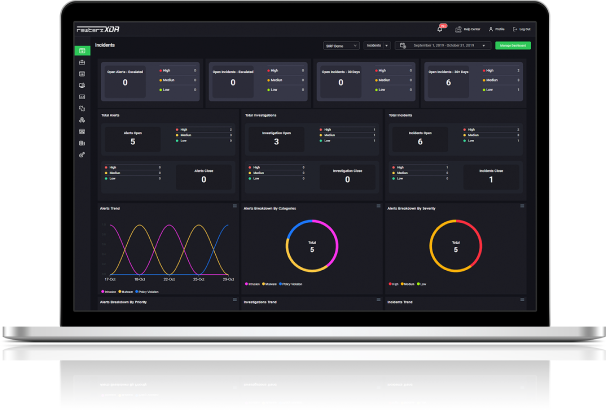

CVE-2025-1500 – IBM Maximo Application Suite Vulnerability
April 7, 2025
Patchwork APT Group – Active IOCs
April 7, 2025
CVE-2025-1500 – IBM Maximo Application Suite Vulnerability
April 7, 2025
Patchwork APT Group – Active IOCs
April 7, 2025Severity
High
Analysis Summary
The Mirai botnet is a type of malware that infects Internet of Things (IoT) devices, such as routers, security cameras, and other smart devices, to launch distributed denial-of-service (DDoS) attacks. The botnet was first discovered in August 2016 and quickly gained notoriety for its ability to launch some of the largest DDoS attacks ever recorded, including an attack that took down the DNS provider Dyn.
Mirai works by scanning the internet for devices that use default or easily guessable passwords, such as "admin" or "password". Once a vulnerable device is identified, the malware infects it and adds it to the botnet, which can then be used to launch DDoS attacks on a target.
Mirai is particularly effective because it can exploit the large number of poorly secured IoT devices that are connected to the internet. This makes it difficult to defend against, as many of these devices have limited processing power and memory, and may not receive regular security updates.
Since its discovery, Mirai has continued to evolve and new variants of the malware have been detected. The best defense against Mirai is to ensure that IoT devices are properly secured, with strong passwords and regular security updates. Network administrators can also use tools to monitor for unusual traffic patterns that may indicate a DDoS attack is underway.
Impact
- Server Outage
- Data Loss
- Website Downtime
Indicators of Compromise
MD5
f60f285dda243fb5e86dcc89e69c8d3f
dee3fd3f96238bacbe3be6a4bb33c0a0
97f0283dcd701cd90f12472a2466ef31
2b1c2001798fb2ad1cd0c6657c6e316e
SHA-256
0d0ae699f8037d178299b083c10629509468f99370c959d9bc1c86ad2555e95d
e9a534eed0aa69b305d09a873537a54e96d0105275901d93ffc8ff2ecc0fda21
600b259fb9673227500015601652856e13f51c44354a27a993e45bf318b840a4
81d240a5d99bc948a58d3d7c746b39c4f36848bb4a6c488fff2558a9ad17c1ae
SHA1
2a829050d06372f0020a5fe94a2d7b43bde074c5
02eb5c282f32d9b8969df7af83d3a57575856f8f
8adabe90ab04f6b95f90381ac56b69665ee25f17
727265261893349f5b40a4e149b492733ef16aa4
Remediation
- Block all threat indicators at your respective controls.
- Search for indicators of compromise (IOCs) in your environment utilizing your respective security controls.
- Never trust or open links and attachments received from unknown sources/senders.
- Upgrade your operating system.
- Enable antivirus and anti-malware software and update signature definitions on time. Using multi-layered protection is necessary to secure vulnerable assets.
- Immediately change default passwords on IoT devices to unique ones.
- Keep devices' firmware and software up to date to ensure that known vulnerabilities are patched.
- Implement firewalls and intrusion detection systems to monitor and control traffic to and from IoT devices.
- Employ tools that can identify unusual behavior or traffic patterns that might indicate a DDoS attack or a compromised device.
- Disable any unnecessary services or features on IoT devices to reduce their attack surface.
- Follow security best practices, such as disabling remote management if not needed and enabling security features provided by the device manufacturer.
- Deploy intrusion detection and prevention systems (IDS/IPS) to monitor for anomalous or malicious network activity.
- Set up alerts for unusual traffic patterns that might indicate a DDoS attack or a compromised device.








